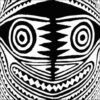Richard Aldridge in New Guinea
Coral Expeditions has asked me to provide a short Biography/History about my career and experiences in PNG so you can get to know me a little more before we meet on the upcoming cruise. I thought I would share my experiences and some photos of my time in Papua New Guinea.
My love of Tribal Art developed from my fascination with the different cultures in this most amazing country.
Over the 11 talks I will be presenting on the cruise, I do hope that you will gain a deeper appreciation for the Art of the Pacific.
Background History
Back in 1989 I graduated from the University of Western Australia with a degree in Geology and Geography. I wanted to travel to Papua New Guinea so I applied for a position with a small petroleum exploration company based in Australia.
I landed in the Highlands in the “town” of Tari, home of the Huli People. Before I had even walked off the airstrip I was fascinated by the Huli.
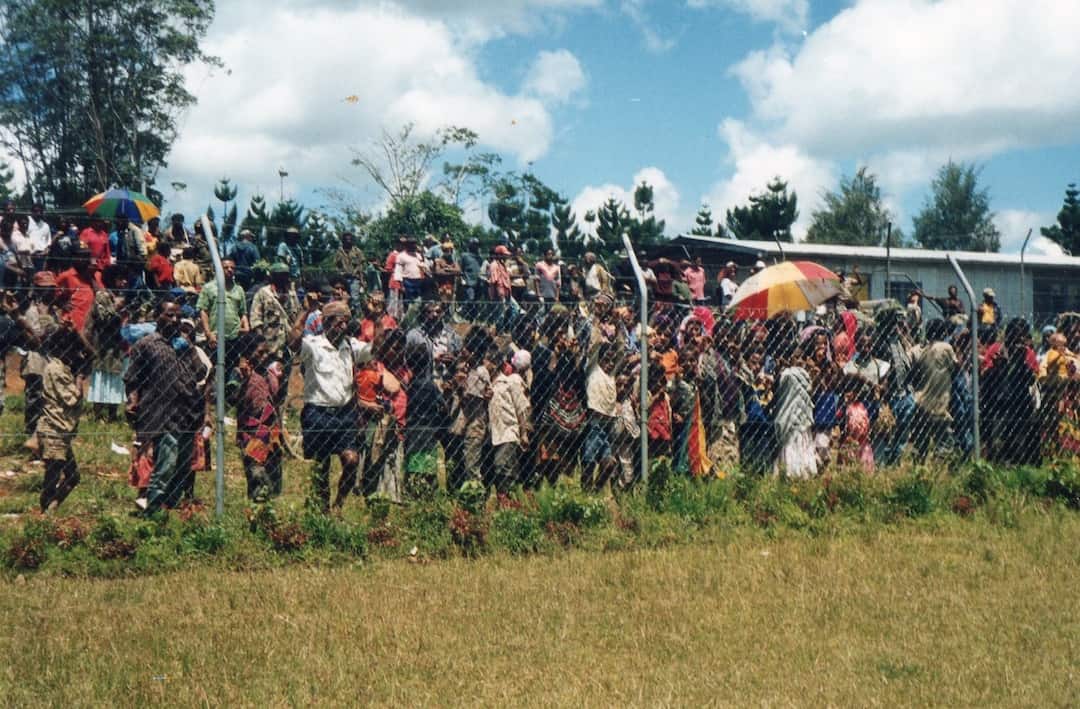
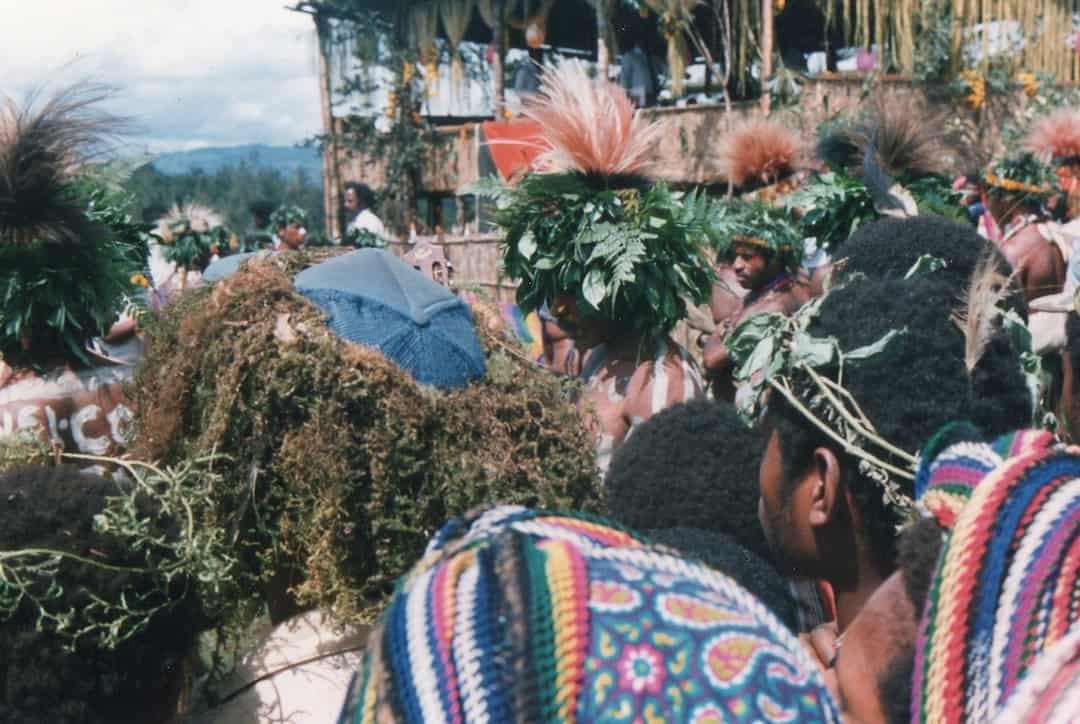
The Huli is very much a living culture and still one of the most fascinating of all Papua New Guinea Cultures.
As I was not living inside a compound with the company, I had to learn about the Huli culture very quickly as not respecting Huli traditional law could get you into some very serious trouble!
Much of my exploration work was in remote locations with only local Huli for company. I learned talk Pisin quickly and rapidly became familiar with Huli Culture.
I made friends with Mark Haluma and Paija Mabilia who kept me out of trouble and taught me a great deal about Huli Culture in detail. They were and still are my brothers.
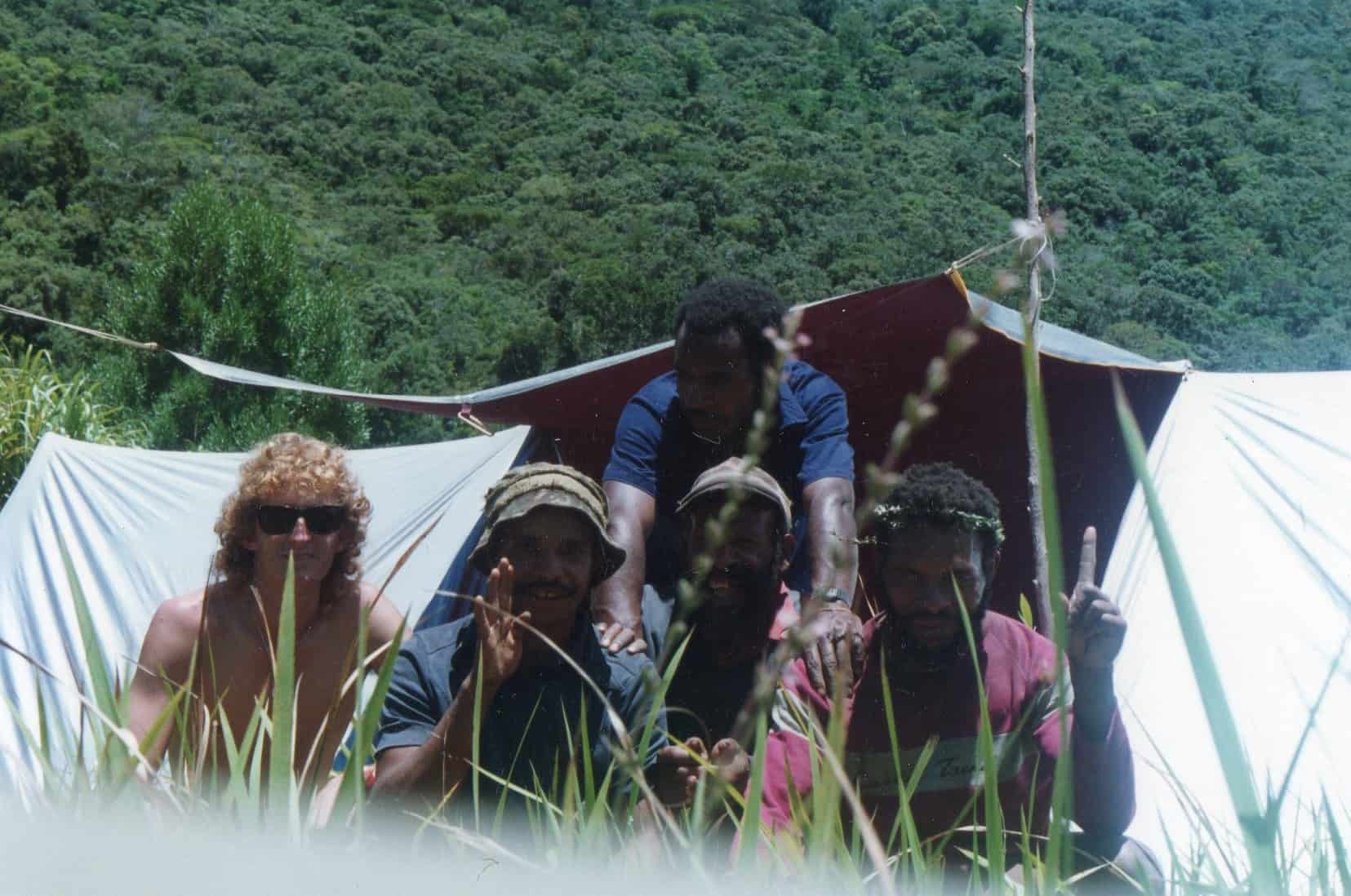
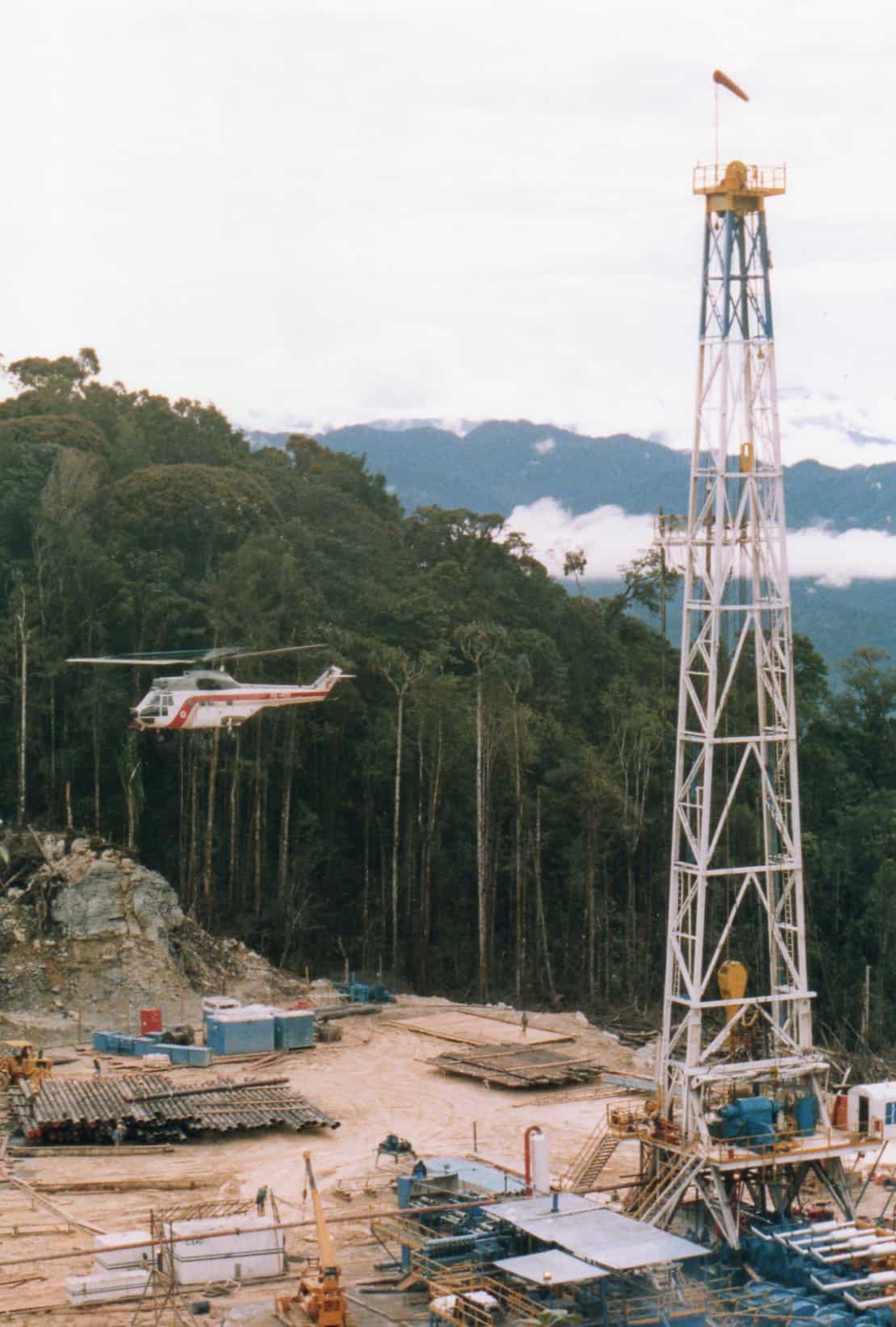
Our exploration work led us to drill the most hopeful lump of ground we could find. 22 Million USD was spent to find absolutely nothing at all. The company collapsed and moved on, however I wanted to stay.
Meanwhile, there were rumors coming from the locals about a Gold Rush at a place called Mt Kare. So I visited there in 1991 and got Gold Fever.
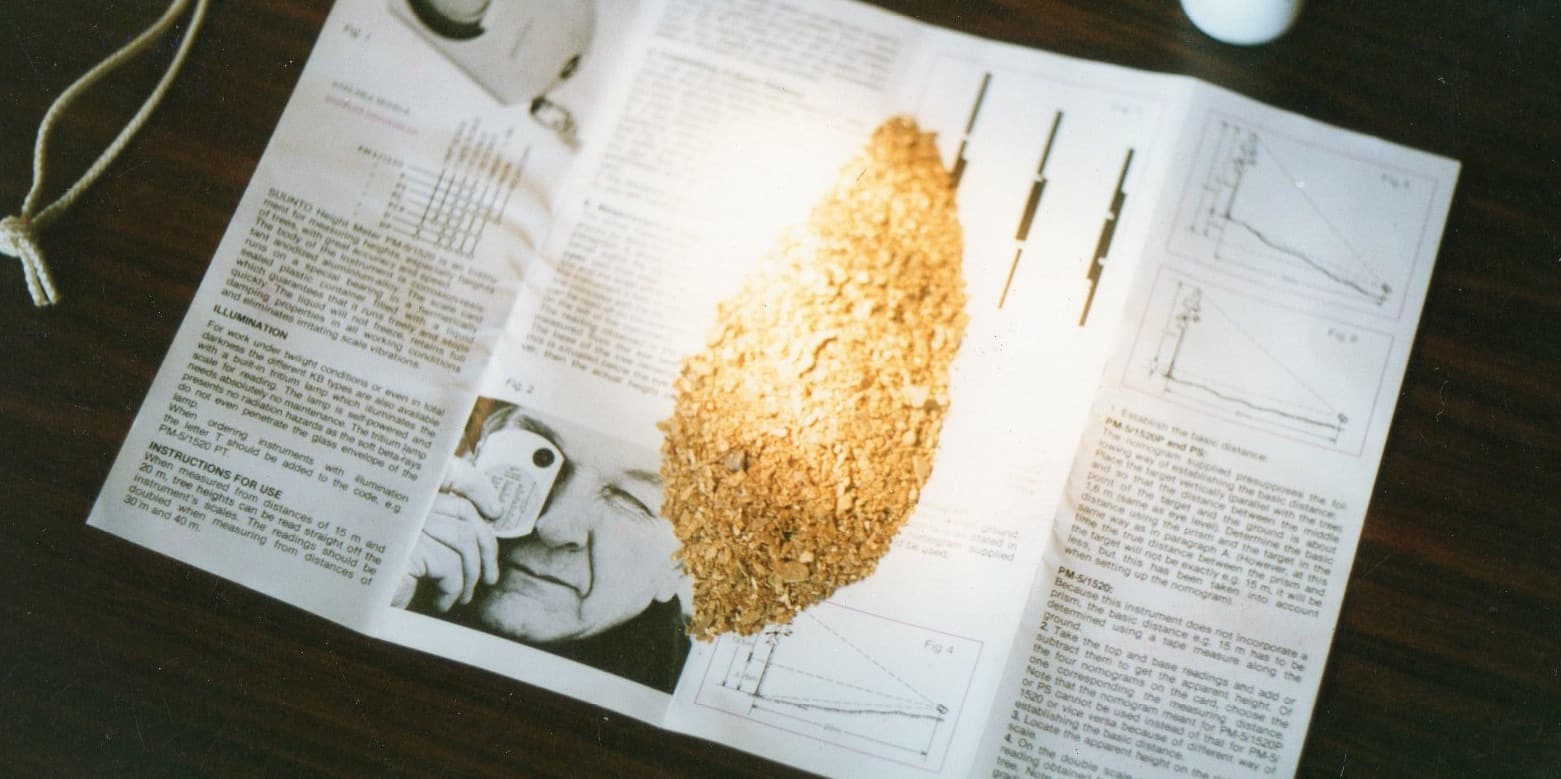
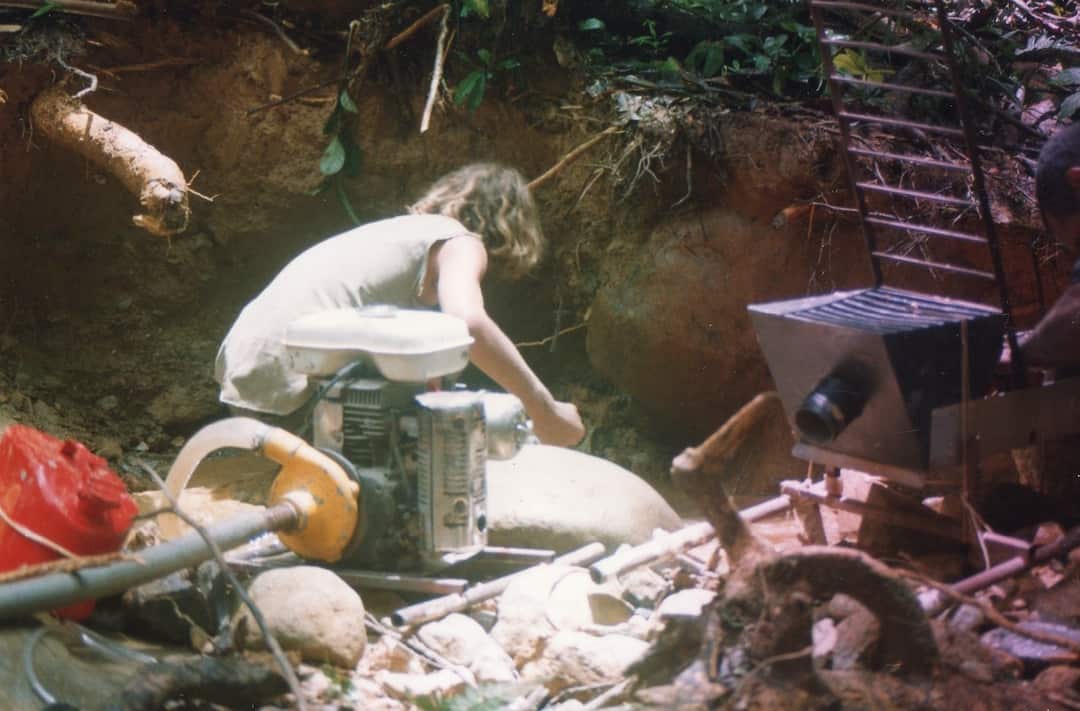
I travelled through much of the Southern Highlands prospecting with my friends Mark and Paija and found very little. In Oksapmin we once again heard rumors of gold in a little village called Sumwari in the East Sepik.
For once the rumors were true and I decided to buy a dredge and establish a home.
My long term Girlfriend joined me and we basically lived in the Jungle for months at a time only flying in and out to get visas renewed.
I negotiated with the local people to work the area and got an alluvial mining license. We purchased a dredge from Queensland and got to work dredging.
Unfortunately six months later while visiting another village, a large flash flood destroyed the dredge and I needed another job to make up for money lost.
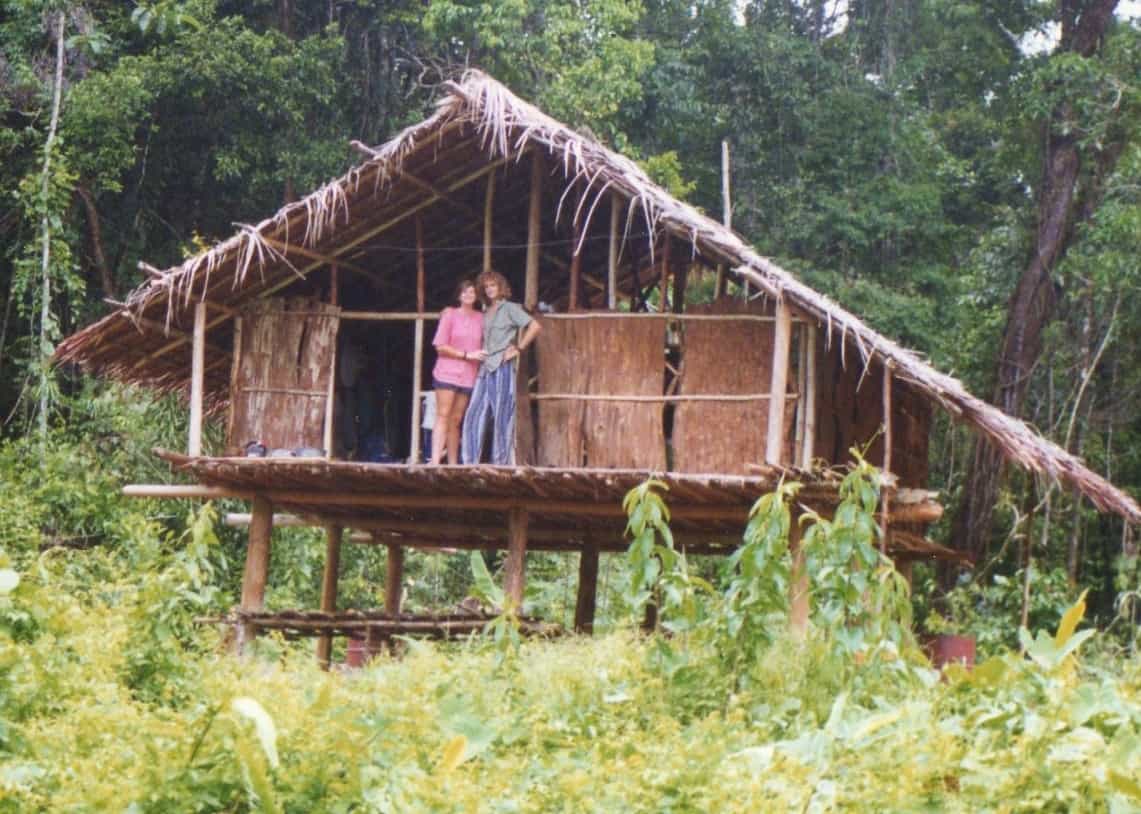

I worked in New Ireland as an Exploration Geologist for a couple of years.
Meanwhile back in the highlands at Mt Kare, CRA, an Australian Mining company, had their camp burnt to the ground by unhappy locals.
A new company had been granted the lease but didn’t have anyone to negotiate with the Huli/Ipili Landowners.
Being very familiar with Huli culture I decided to apply for the position.
I was employed as a Camp manager and ended up doing Landowner negotiations.
I reunited with my old friend Mark and Paija and walked into Mt Kare.
As the last Helicopter had been burnt by angry Landowners, no one was willing to land in this area.
My years working with the Huli allowed me to overcome many cultural misunderstandings.
The camp grew rapidly from being the one house (in which I lived with my wife Marnie), to being a full-blown Exploration camp.
When the gold price plummetted years later, the Canadian Company decided to withdraw.


I managed to find work with Ambua Lodge during the Tari-Nipa tribal fight.
I stayed on after the fight and then later worked with my wife as a Hotel Manager.
It was here that I first realised people were interested in buying New Guinea art.
In 2001 I decided I would buy and sell tribal art for a living.
I thought that with my experience in logistics and the ability to travel like a local it would be relatively easy.
What I didn’t realise then was just how much there was to learn about New Guinea Tribal Art.
My first few collecting trips were to islands of New Ireland and to the Sepik.
I was very green and bought many really terrible tourist pieces. However I was fortunate that at least a couple of the pieces I found made the trips worthwhile.
I owe a debt of gratitude to Crispin Howarth who at the time was a dealer and is now curator of the National Gallery of Australia. His enthusiasm was contagious and his knowledge extensive. He taught me about patina and style changes.
Realizing that the Sepik River has many many fake old pieces I decided to explore New Ireland. I went to the Tabar islands and Lihir and then worked my way down the coast to Siar. On my next five trips, I covered the whole province and ended up in the Duke of York islands.
The natural progression from New Ireland was East New Britain and then through to West New Britain.
Most of my travelling between villages was on a 23-foot banana boat with a 40 hp motor. These boats were versatile and could land almost anywhere along the coast.
After traveling most of the coastlines of West and East New Britain, I moved to Siassi Islands and Huon Gulf.
My trips were anywhere between 3 weeks to 7 weeks long and between trips I would sell the pieces I had collected.
I didn’t sell everything though. Some pieces were harder to sell than others, I didn’t realise it at the time but I was rapidly becoming a collector
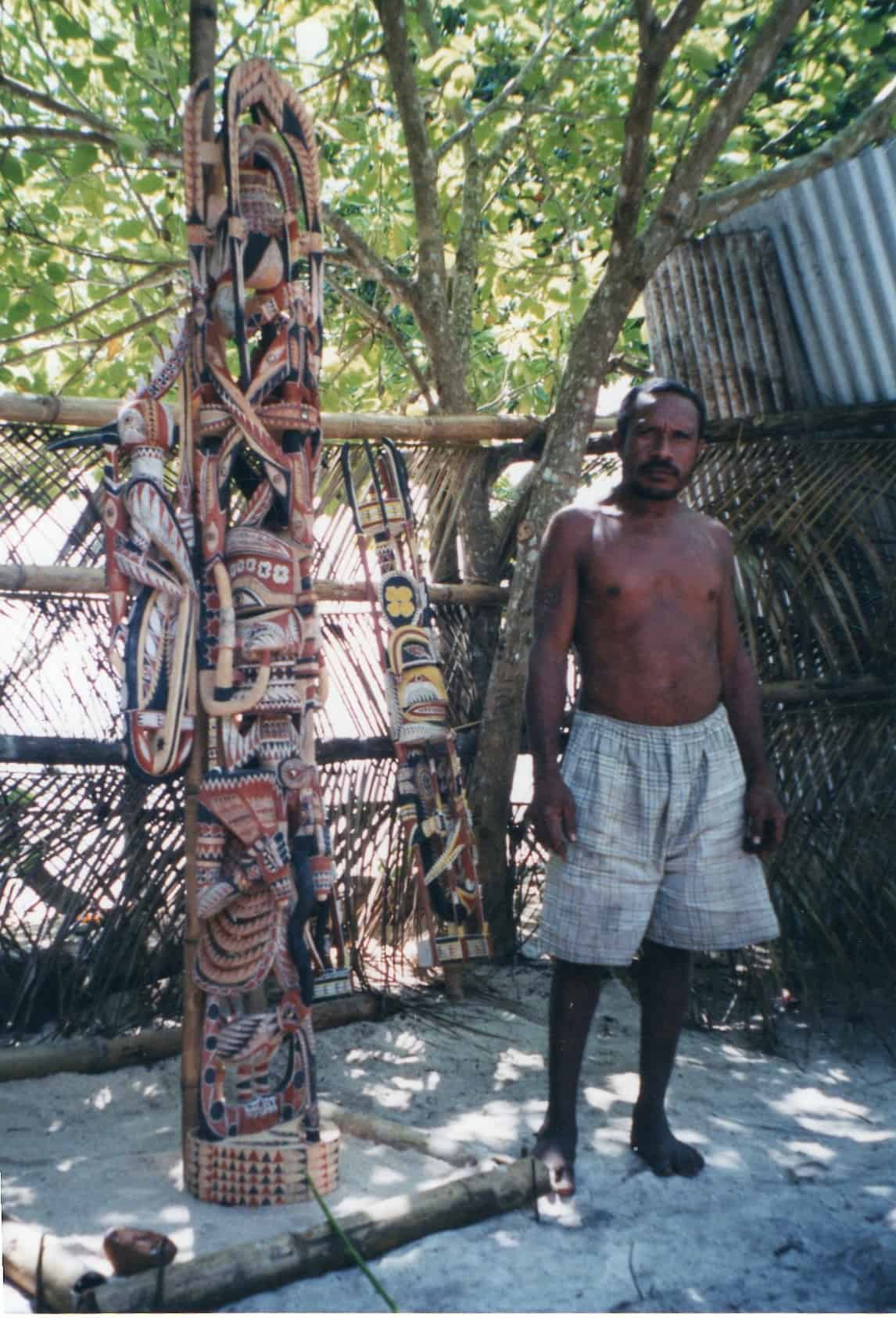

In 2003 I held my first exhibition in New Zealand to coincide with the Pacific Arts Association conference. It was held in an antique store on a very low budget, however I had some good material.
It was a great success as I made some good contacts and met many interesting people.
It was also the first time I realized that the European “experts” did not know everything. The real experts on these objects were actually the local PNG people who I had been sitting around fires and drinking coffee. Up until then, I had never really appreciated how lucky I was to have had so much exposure to the people who made and used the objects.
During the exhibition, I was able to give a short talk about the Art that I had collected and was pleasantly surprised that the “experts” took my information so seriously. Quite a few of those experts had spent time in New Guinea and were not only the pure academics I was expecting.
Having gained some experience collecting in the Islands I felt it was time to return to mainland PNG. Rather than the busy Sepik River, I decided to collect Art from the Middle Ramu.
My trips up the Ramu were interesting and I did find a few great objects however it was really the Lower Ramu River that I had collected the most artefacts from.
Unlike other collectors in this area, I realized that the important objects didn’t come out during the day in front of the village but rather they come out at night.
Understanding the spirituality of objects is essential.
I covered every village between the Lower Ramu and the Lower Sepik over a total of 8 trips.
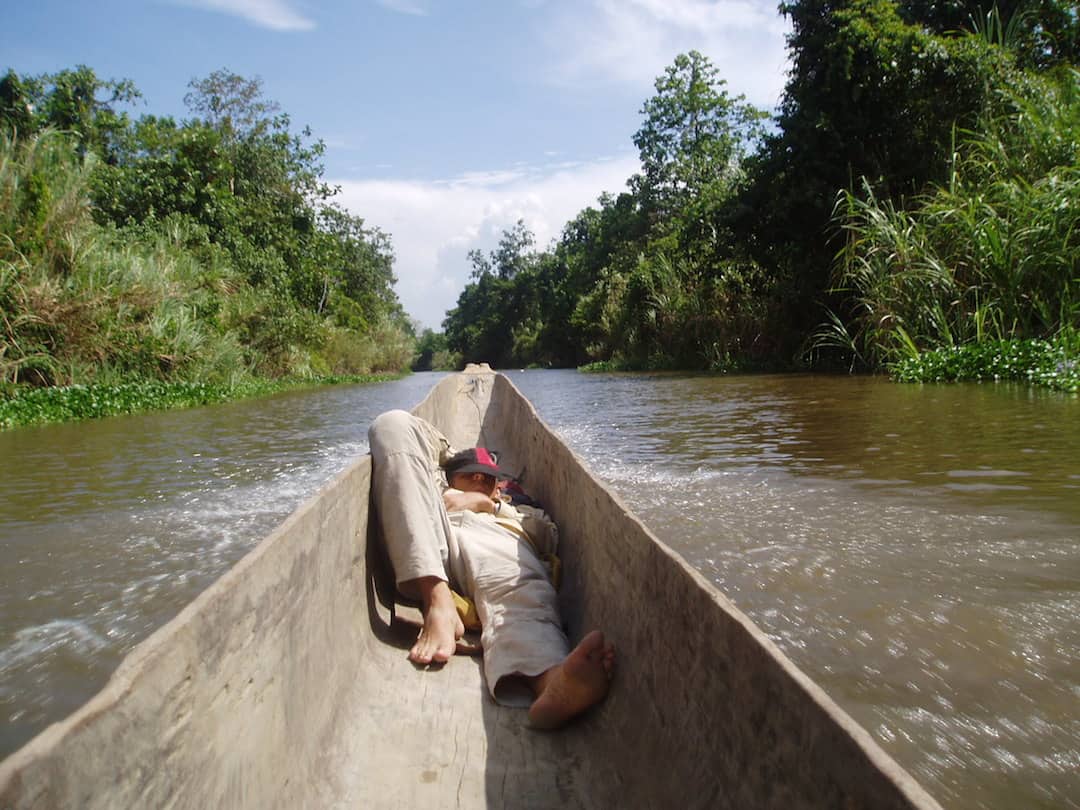
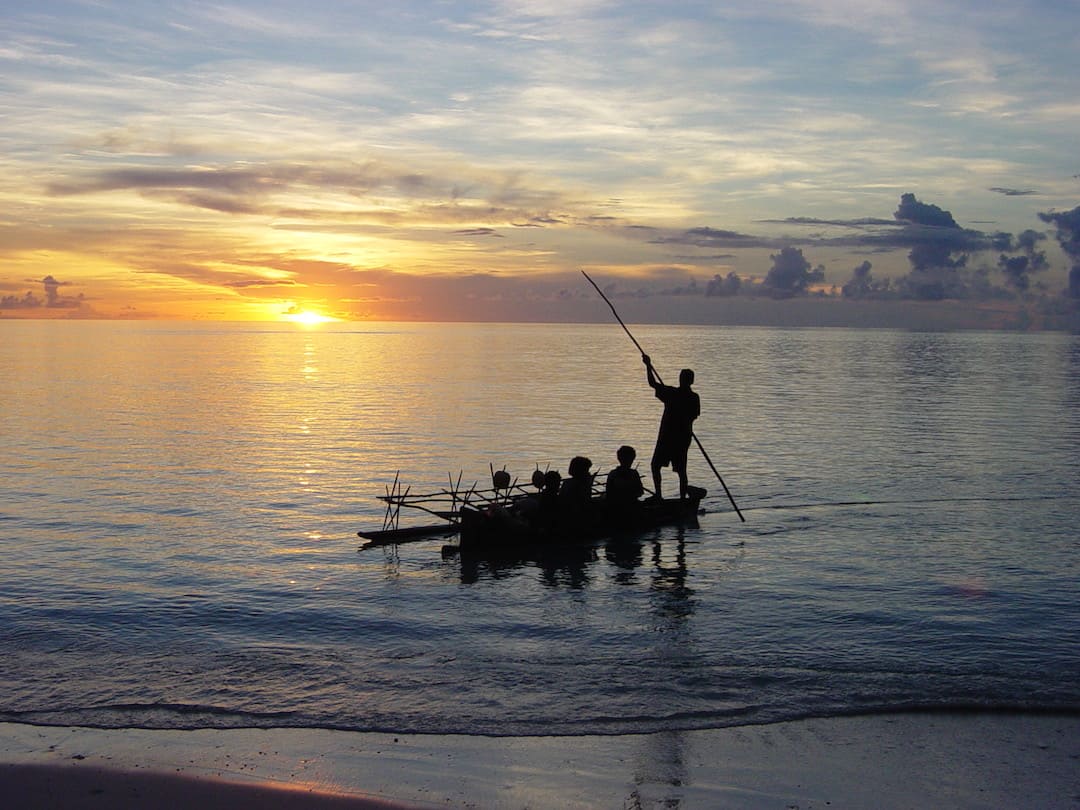
Around 2005 I found myself travelling to Misima and the outer Islands of Milne Bay. I fell in love with the area almost immediately. The Art from this area is beautiful, the people are relaxed and the fishing is superb.
My boat operator called Abel Abel who is from Deboyne Island became close friends. If you are willing to load 2 x 44 gallons drums of fuel into a 23-foot dinghy and travel this whole region, it can be explored by boat.
Over the next 3 years I made over a dozen trips around Milne Bay Province visiting people and discussing their Art in detail.
Many of these better pieces I put aside as part of a now growing Collection.
In 2007 an American dealer who was collecting in Collingwood Bay recommended that we get together and do a joint exhibition. We decided to put together our best material and source other objects from collections around the world.
In 2009 Michael Hamson and I held an Exhibition in San Francisco to coincide with the International Tribal Art Fair. Michael is one of the world’s top oceanic Art Dealers and the exhibition was truly world class and very well attended.
The Exhibition led to the publication of ‘The Art of the Massim & Collingwood Bay’. This remains one of the best references for Massim and Collingwood Bay Art to date.
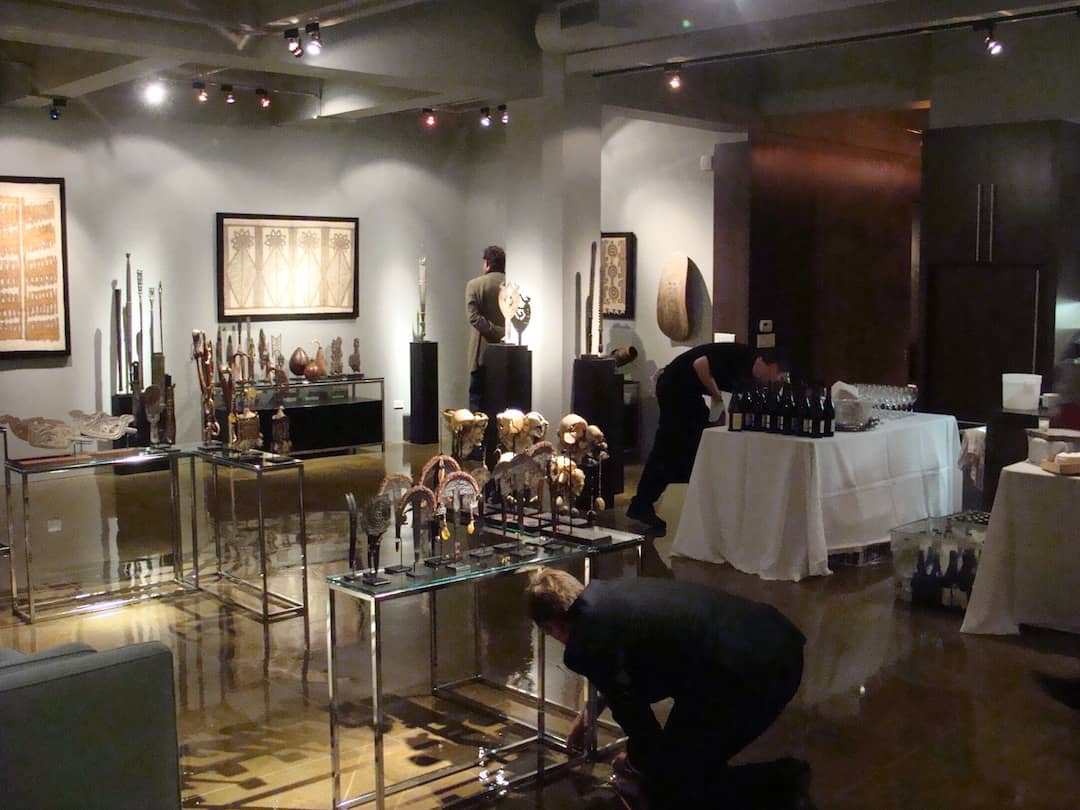
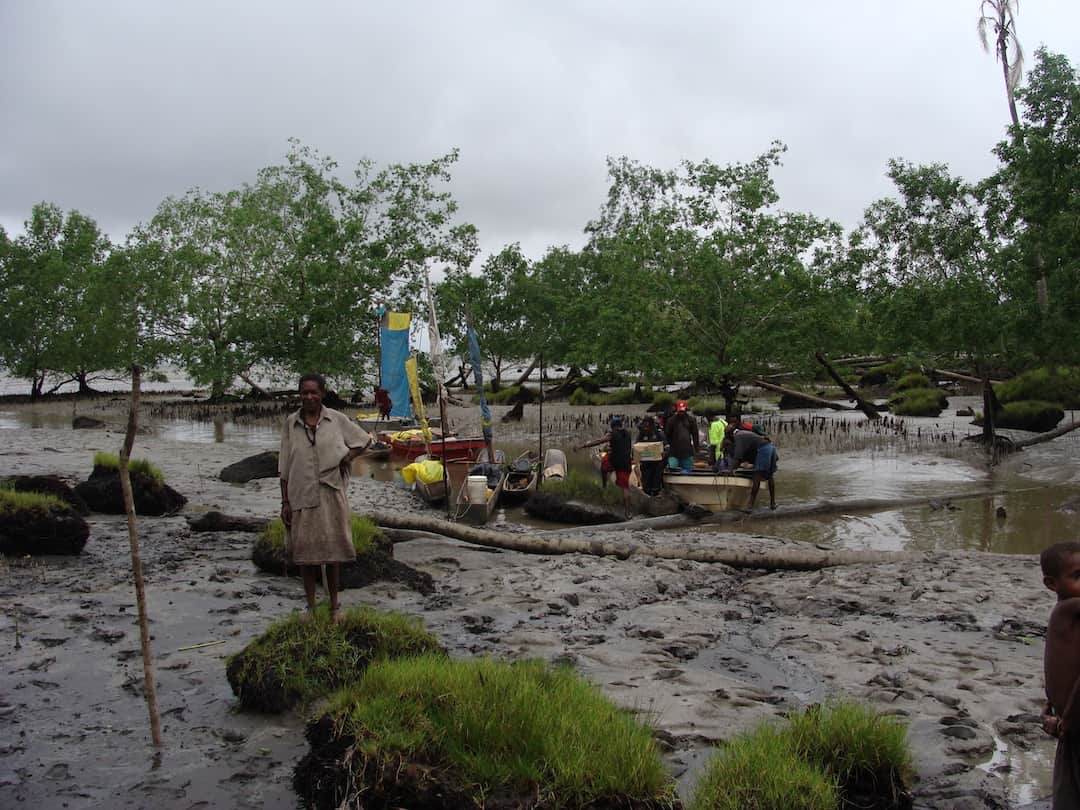
By 2010 I had visited most of the villages and hamlets of Milne Bay province with the exception of the Trobriand Islands. It was time for me to move area and leave Abel Abel to continue exploring the few areas we hadn’t visited together.
I headed to the unbelievably large mangroves of the Papuan Gulf. The Papuan Gulf compared to Milne Bay is a miserable place to travel. The mud, the mangroves and threat of robbery made it unpleasant. That coupled with crocodiles and the shallow seas making dinghy travel hazardous should have put me off.
The Art from this area though is amazing and I wanted to learn more.
Over the next few years, I did numerous trips leaving from either Biamaru or Kerema. The Kerama side of the Papuan Gulf is connected by road to Port Moresby and for the first time during my time in Papua New Guinea, I felt the need to travel with armed policemen. Travelling by dinghy near Kerema is also dangerous. The extremely shallow seas can cause waves that break for over 100 meters offshore. I had an excellent boat operator called Philip.
The benefit of this dangerous and unpleasant type of travel did however mean I went to places no other collector had been to for decades.
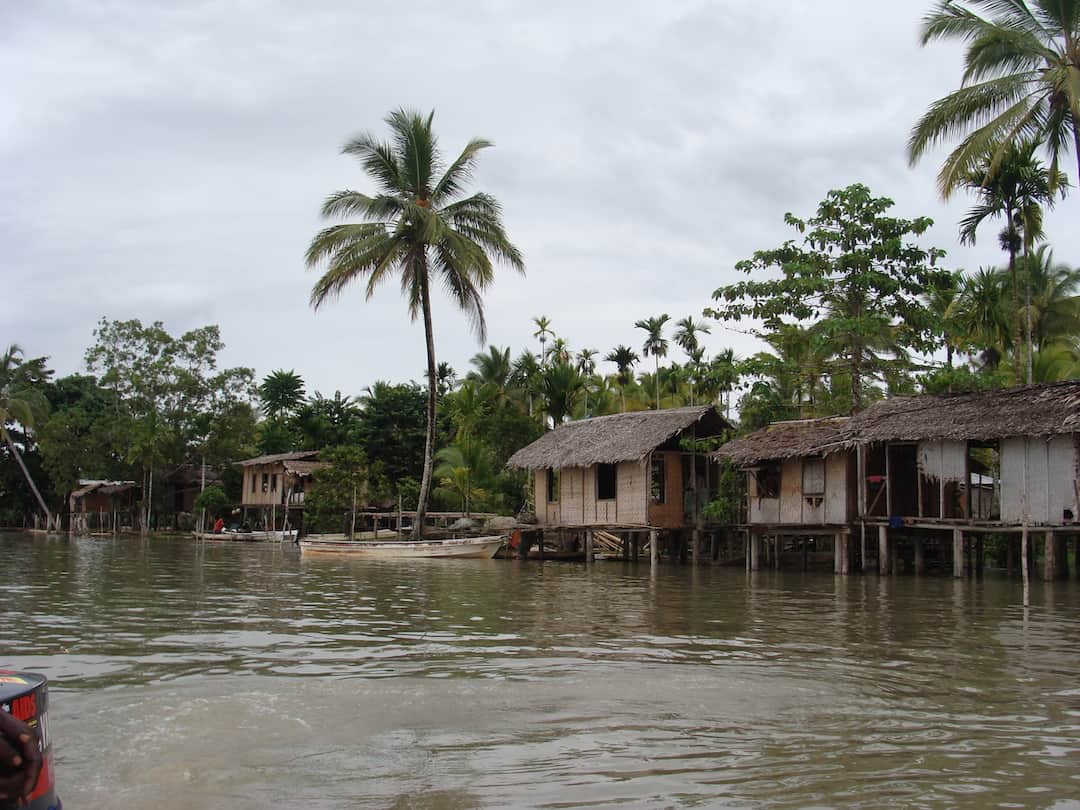
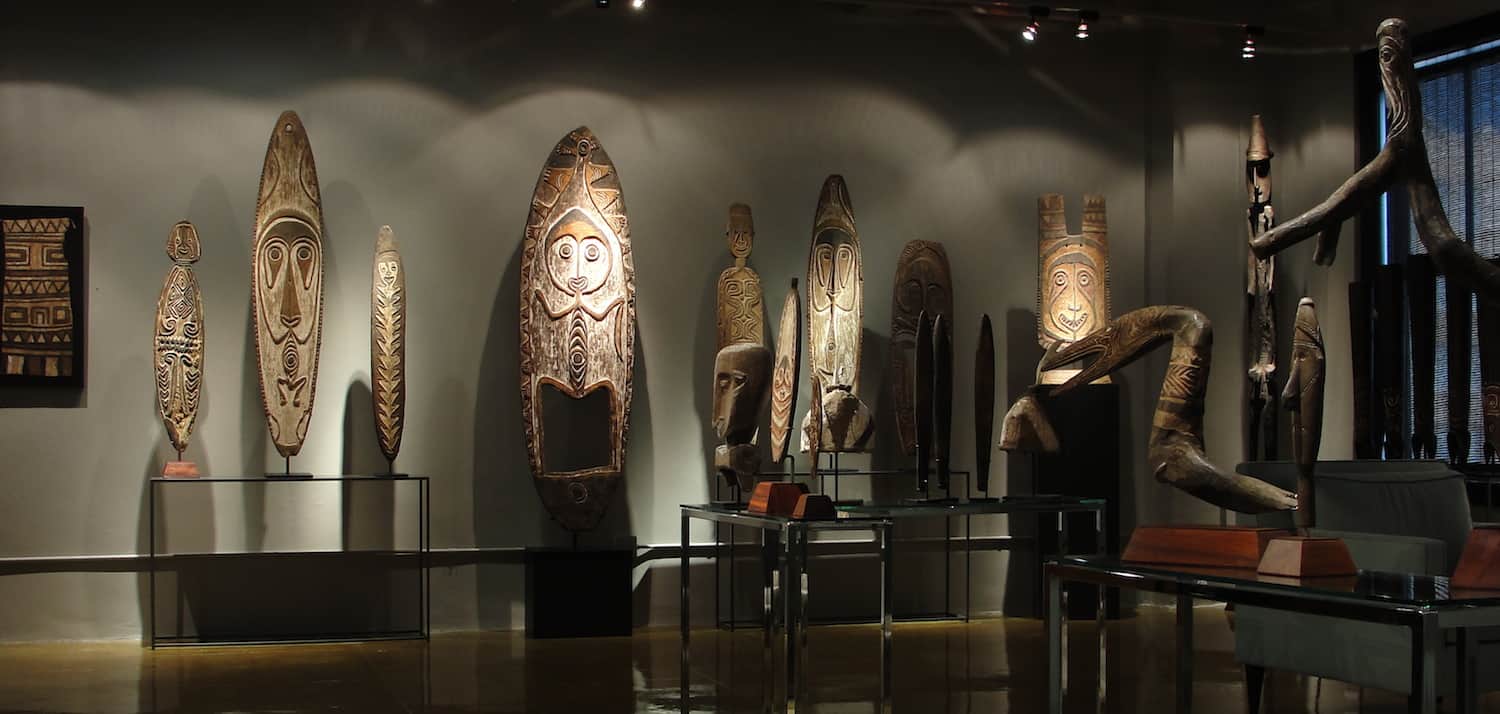
I was fortunate and collected many wonderful pieces.
These pieces would be the foundation for a second exhibition in San Fransico with Michael Hamson called ‘Red Eye of the Sun: The Art of the Papuan Gulf.’
Over the next few years, I went on trips to Siassi Island West New Britain, East New Britain and even to Bougainville. Although I found a few great pieces here and there, it became increasingly apparent to me and other collectors that there wasn’t as much traditional Art to be found. During this time I also wrote an article in conjunction with Harry Beran about the long-eared Massim Lime spatulas.
In 2014 I decided I would produce a documentary about a piece of art that is still being used in Tolia society today. I returned to East New Britain with a camera and met with an old friend called Vin Lote.
Vin Lote is a Tolia chief and had initiated me into Tolia culture years before. We worked together and produced a short film called ‘Tutuna, A Tolia Money Ring.’ I felt it was important to document how this important piece was made and its cultural significance.
Tolia Money Ring
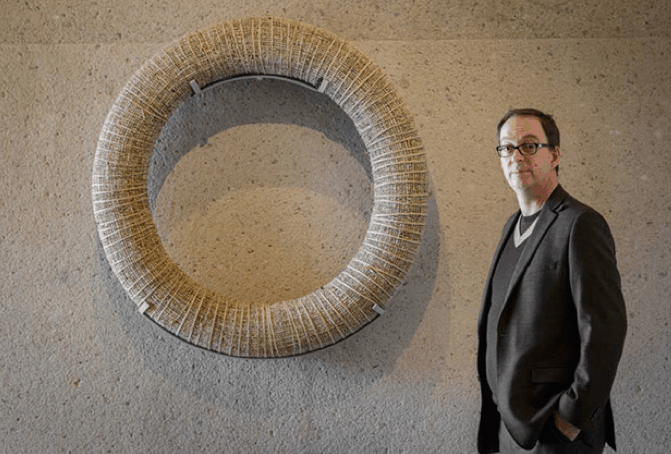
The Tolia Money Wheel is probably one of the best documented Pacific Art works ever collected.
It now is on display in the National Gallery of Australia in Canberra.
My next project was documenting the making of a Malangan on New Ireland. Mathew Salle is now a close friend and one of the few carvers who still uses the 5 traditional stages in carving these Oceanic Masterpieces.
The short for this documentary is available and the final cut should be ready soon.
Currently I am working from home buying and selling both PNG and Aboriginal Art works. My website continues to grow and I find new pieces from a variety of sources.
I live in Perth with my wife Marnie and our three Children
I Look forward to meeting you.
